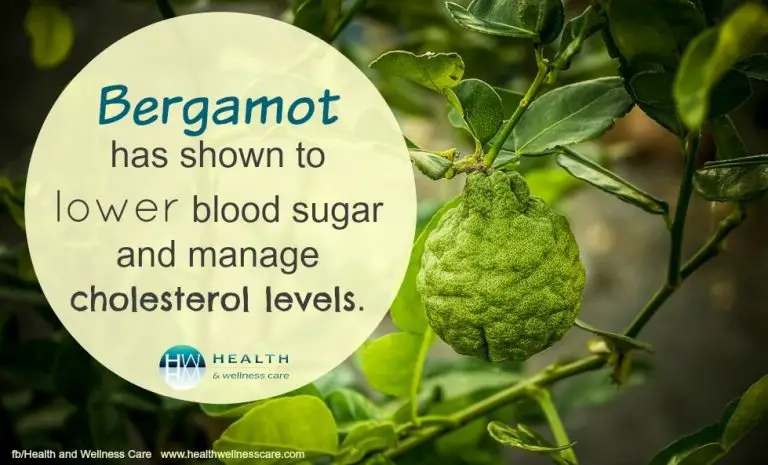What Does Rosemary And Sage Taste Like?
Introducing Rosemary and Sage
Rosemary and sage are two classic Mediterranean herbs that have been used in cooking and medicine for thousands of years. Native to the Mediterranean region, rosemary is an evergreen shrub with needle-like leaves and a distinctive piney, lemony aroma and flavor. Sage is a small perennial shrub with soft, woody stems and grayish leaves that have a musty mint-like flavor (https://www.ps.org.au/content/articles/2018/7/20/feature-plant-friday-the-rich-history-of-rosemary).
Both rosemary and sage have a long history of culinary and medicinal use dating back to ancient times. In the Middle Ages, sage was revered for its medicinal properties and believed to promote wisdom and long life. Rosemary also had a reputation for stimulating memory and focus. It became an important herb in Mediterranean cuisine, used to flavor roasted meats, sauces, and breads (https://www.mcgill.ca/oss/article/environment-quirky-science-supplements/mystique-parsley-sage-rosemary-and-thyme).
Today, rosemary and sage are essential herbs in many regional cuisines around the Mediterranean, including Italian, French, and Spanish cuisine. Their woodsy, aromatic qualities make them perfect for seasoning roasted vegetables, meat dishes, and hearty stews. Rosemary’s pine-like flavor pairs well with chicken, pork, lamb, and fish. Sage is commonly used with rich meats like pork, duck, and sausage, as well as in stuffings and sauces (https://www.savannahnow.com/story/lifestyle/columns/2016/10/26/food-rosemary-and-sage-are-essence-fall/13912557007/).
Describing the Flavor of Rosemary
Rosemary has a very distinct, piney, woodsy, herbal flavor that sets it apart from other herbs. Many describe it as reminiscent of a pine forest, with hints of lemon, eucalyptus, and camphor coming through as well. According to Flavor Investigator, rosemary has “a slightly minty, sage-like, peppery, balsamic taste with a bitter, woody aftertaste.”
The flavor is aromatic and pungent, which can be overpowering if too much is used. As one Reddit user commented, “Rosemary on its own definitely tastes like pine needles, I agree, but I also think that it does a really good job of bringing out other flavors in a dish without making the rosemary flavor too overpowering.”
Sources:
https://myfoodjobrocks.com/rosemary/
Describing the Flavor of Sage
The flavor of sage can be described as woodsy and earthy, with hints of pine, grass, and citrus notes. It has a slightly astringent and bitter taste profile. According to Masterclass, the herbal flavor of sage is “earthy, slightly peppery taste with hints of mint, eucalyptus, and citrus.”
The woodsy, earthy qualities of sage are often compared to pine or grass flavors. As AllRecipes notes, the taste is “woodsy, earthy, piney” with a “fresh” quality. The pine notes add a subtle resinous flavor, while the grassy taste lends a pleasant green vegetal quality.
In addition to wood, earth, and pine, sage can have hints of citrus. Lemon and orange brighten up the deeper herbal notes. The citrus flavors complement the woodsy earthiness and prevent sage from tasting too heavy.
There is also a mild astringency and bitterness to sage that balances out the sweet pine and citrus tones. This slight dry mouthfeel and bitter edge gives sage its signature savory-herbaceous flavor profile.

Rosemary and Sage Flavor Pairings
When using rosemary and sage, it helps to understand what foods and flavors they pair well with to bring out their best qualities. Both rosemary and sage are often used with meat, especially lamb, chicken, and pork. The woody, pungent notes in these herbs help cut through the richness of fatty meats. Potatoes, breads, and hearty vegetables like carrots, pumpkin, and sweet potatoes also make excellent partners for rosemary and sage. The herby flavors complement the natural sweetness in these foods.
Garlic, thyme, and oregano make classic herb combinations with rosemary and sage. The mix of pungent and floral notes creates depth and nuance. Onions and lemon can also accentuate the herbal flavors. In desserts, rosemary often pairs well with fruits like oranges, apples, pears and apricots, while sage complements vanilla, chocolate, and warm spices like cinnamon.
When using rosemary and sage together, they balance each other nicely. The piney bite of rosemary contrasts with mellow, earthy sage. Just be sure not to overpower the sage, since rosemary’s flavor can dominate. Start with a 2:1 ratio of rosemary to sage as a baseline.
For more flavor pairing ideas, check out this handy chart.
Culinary Uses of Rosemary
Rosemary is a versatile herb that can be used either fresh or dried in a wide variety of dishes. Its pine-like, slightly peppery flavor complements meats, vegetables, grains and more.
When used fresh, rosemary adds a bright, woodsy aroma and flavor to dishes. Fresh rosemary goes well with roasts like lamb, beef or pork. It can also be chopped finely and mixed into compound butters for topping grilled meats or vegetables. Fresh rosemary sprigs can be used as a garnish or simmered in soups to infuse flavor.
Dried rosemary has a more concentrated flavor than fresh. It’s commonly used to season tomato sauces, pasta dishes, stews and soups. A little bit of dried rosemary goes a long way. It pairs especially well with chicken, lamb, potatoes, mushrooms and root vegetables like carrots or parsnips. Sprinkle it on before roasting veggies or potatoes in the oven.
Rosemary’s distinctive taste stands up well to long, slow cooking. Add whole sprigs or dried rosemary at the beginning when braising meat or simmering soups and stews. The flavor will infuse the entire dish. Remove the whole sprigs before serving.
Some chefs use chopped rosemary to flavor oil by heating them together in a pan then drizzling the oil over pizza, bruschetta or grilled bread.
Culinary Uses of Sage
Sage is a versatile herb that is commonly used both fresh and dried in a variety of dishes. Its earthy, aromatic flavor pairs well with cheeses, meats, breads, and vegetables.
When using fresh sage, the leaves can be fried or sauteed in oil or butter to mellow and enhance their flavor before using as a garnish. Fried sage leaves make a lovely crunchy topping for pastas, risottos, roasted vegetables, and more. Fresh sage is also excellent layered in lasagnas, chopped and added to stuffings, or used to make flavorful compound butters for seafood, chicken, or steak.
Dried sage is best for seasoning rubs, marinades, breads, and hearty braised dishes like stews, soups, and roasted meats. It adds an earthy background note when mixed into sausage or ground meat. Dried sage also complements pumpkin, butternut squash, mushrooms, onions, and potatoes.
Both fresh and dried sage pair wonderfully with garlic, rosemary, thyme, oregano, parsley, basil, marjoram, and black pepper. The flavors of sage also complement dishes featuring cheese, eggs, nuts, legumes, and citrus.
Herbal Benefits
Both rosemary and sage contain powerful antioxidants and anti-inflammatory compounds that may provide health benefits.
According to research summarized on Healthline, the antioxidants in rosemary including rosmarinic acid, carnosic acid, and carnosol may help protect against oxidative stress and inflammation in the brain, heart, and digestive system [1]. Rosemary may help reduce risk of neurodegenerative diseases like Alzheimer’s and support brain function and memory. Some studies also indicate rosemary may support heart health by improving blood circulation and protecting against heart attacks. The anti-inflammatory compounds in rosemary may benefit digestive issues like inflammatory bowel disease.
Sage contains antioxidant compounds like rosmarinic acid and flavones that provide anti-inflammatory effects, as described in Medical News Today. Through these actions, sage may help reduce risk of brain disorders, support heart health, and aid digestive issues like gas, cramps, and bloating [2]. Some research indicates sage may also strengthen immunity.
However, more research in humans is still needed on the potential health benefits of both rosemary and sage. But due to their antioxidant content, adding these herbs to a diet rich in plants may support overall health.
How to Buy and Store Rosemary and Sage
When buying fresh rosemary and sage, look for vibrant green leaves without any wilting, discoloration or blackened spots. Avoid rosemary or sage bunches with yellow or dried out leaves. The leaves should look fresh and aroma robust when you inhale their scent.
Proper storage is key to retaining the flavor of fresh rosemary and sage. First, trim the ends of the stems and place them in a cup of water like cut flowers. Cover loosely with plastic wrap and store in the refrigerator. Refresh the water every 2-3 days. Rosemary and sage will keep this way for 1-2 weeks.
You can also wrap rosemary or sage sprigs in a dry paper towel, place inside a loosely closed plastic bag, and refrigerate for 3-5 days. Alternatively, freeze chopped rosemary or sage leaves inside ice cube trays filled with olive oil or stock for longer frozen storage.
Dried rosemary and sage leaves keep for 6 months to 1 year stored in an airtight container in a cool, dark place. Over time, the dried leaves will lose some of their potency and flavor.
Growing at Home
Both rosemary and sage thrive in similar growing conditions, making them great companions to plant together in an herb garden. The ideal location to grow them is in full sun and in well-drained soil. Prepare the soil by mixing in compost or other organic matter to improve drainage. Space the plants 2-3 feet apart to allow for good air circulation as the plants mature.
Rosemary and sage are hardy in USDA zones 5-10 but can be grown as annuals in colder zones. They can also be grown indoors in containers near a sunny window. For potted plants, choose a container at least 10-12 inches wide and use a well-draining potting mix. Water thoroughly after planting and allow the soil to partially dry out between waterings. Rosemary and sage are drought tolerant once established.
To harvest, snip off stems as needed once the plants are at least 12 inches tall. Cut no more than 1/3 of the plant at a time to keep it healthy. The best time to harvest is just before flowers appear. To dry the herbs for storage, hang small bundles of stems upside down in a warm, dry area out of sunlight. Once fully dried, you can store the leaves in airtight containers for months.
Sage can be propagated by layering in summer or by stem cuttings. Rosemary can be propagated from stem cuttings taken in spring or summer. Taking 4-6 inch cuttings from new growth and rooting them in potting mix will give you new plants identical to the parent.
Signature Recipes
Rosemary and sage are both extremely flavorful herbs that pair beautifully together in recipes. Here are a few signature dishes that allow their herbal notes to shine:
This Roasted Turkey with Fresh Herbs is seasoned under the skin and in the cavity with a blend of fresh rosemary, sage, thyme, and garlic. As the turkey roasts, the herbs infuse the meat with aromatic flavor. The rosemary’s woodsy pine notes balance beautifully with the earthy, slightly peppery sage.
For a simple yet elegant pasta, try this Rosemary and Sage Brown Rice. It’s made by sautéing shallots and garlic in butter, then adding the herbs to toast them and draw out their essential oils. Cream is stirred in to create a creamy, herbed rice that makes a comfortingly delicious side dish.
Finally, these Herb-Crusted Pork Chops are coated in a savory blend of chopped rosemary and sage, Dijon mustard, breadcrumbs, and Parmesan. As the chops cook, the crust forms a wonderfully aromatic and textured coating. The complementary flavors of the two herbs shine through in each bite.




